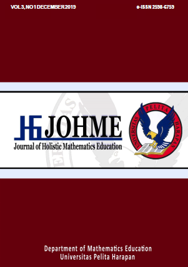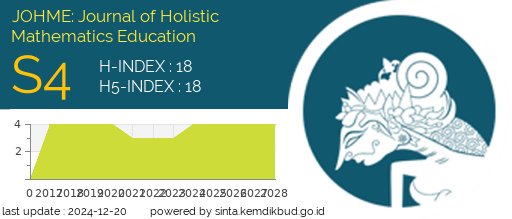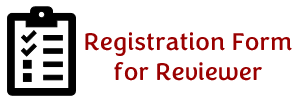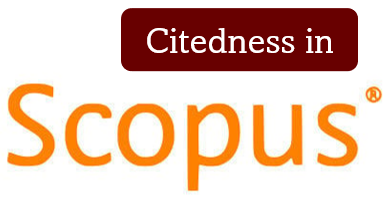MOTIVATION AND SELF-LEARNING READINESS OF BLENDED LEARNING IN RESEARCH AND STATISTICS COURSE FOR UNDERGRADUATE NURSING STUDENTS
DOI:
https://doi.org/10.19166/johme.v3i1.1919Keywords:
academic motivation, self-learning readiness, blended learning, nursing studentsAbstract
Though blended learning has been applied in nursing schools in Indonesia, the number of studies with regards to students’ motivation and self-readiness in their courses is still lacking. In addition, many student nurses claimed that the Research and Statistics course was more difficult than other nursing courses. This study aimed to assess the nursing students’ motivation and self-learning readiness of blended learning in a Research and Statistics course of the Faculty of Nursing at Universitas Pelita Harapan. The preliminary study recruited forty nursing students for validity and reliability test purposes. Two questionnaires were translated and tested including the adapted Academic Motivation Scale and the adapted Self-Directed Learning Readiness Scale for Nursing Education. Both Cronbach’s alphas of the questionnaires were above 0.8 (good reliability), however some questions were revised based on its validity test results and its readability. A total of 181 students were involved in the study and descriptive statistics were applied in the data analysis. The findings showed that nursing students had relatively moderate self-directed learning readiness (mean 90.18). With regards to academic motivation, students’ intrinsic motivation to know (mean 3.35) was higher than in other subdimensions of academic motivation. It also means that most of the students felt happy while learning and exploring something new in the course. In conclusion, motivation and self-learning readiness of students are important when applied to a blended course. It is recommended that nurse educators should identify students’ motivation and self-learning readiness to provide student-centered learning especially in a Research and Statistics course. Further research may involve more universities in different regions of Indonesia.
BAHASA INDONESIA ABSTRAK: Meskipun blended learning telah diterapkan di pendidikan keperawatan di Indonesia, sejumlah studi berkaitan dengan motivasi dan kesiapan diri mahasiswa dalam pembelajaran mereka masih kurang. Selain itu, banyak mahasiswa perawat mengklaim bahwa mata kuliah Penelitian dan Statistik lebih sulit daripada mata kuliah keperawatan lainnya. Penelitian ini bertujuan untuk mengidentifikasi motivasi mahasiswa keperawatan dan kesiapan belajar sendiri dalam mata kuliah Penelitian dan Statistik dengan blended learning di Fakultas Keperawatan Universitas Pelita Harapan. Studi pendahuluan merekrut empat puluh mahasiswa keperawatan untuk keperluan uji validitas dan reliabilitas. Dua kuesioner diterjemahkan dan diuji yaitu Skala Motivasi Akademik dan Skala Kesiapan Belajar Sendiri (self-directed readiness) yang telah disesuaikan untuk pendidikan keperawatan. Hasil uji kedua kuesioner mempunyai nilai Cronbach Alpha berada di atas 0,8 (reliabilitas yang baik), namun beberapa pertanyaan direvisi berdasarkan pada hasil tes validitas dan keterbacaannya. Sebanyak 181 siswa terlibat dalam penelitian ini dan statistik deskriptif diterapkan dalam analisis data. Dalam penelitian ini, terungkap bahwa mahasiswa keperawatan memiliki kesiapan belajar mandiri yang relatif sedang (rata-rata 90,18). Sehubungan dengan motivasi akademik, motivasi intrinsik mahasiswa untuk mengetahui (rata-rata 3,35) lebih tinggi daripada sub-dimensi lain dari motivasi akademik. Ini juga berarti bahwa sebagian besar mahasiswa merasa bahagia saat belajar dan menggali sesuatu yang baru dalam pembelajaran. Sebagai kesimpulan, motivasi dan kesiapan diri adalah penting saat melaksanakan blended learning. Penelitian ini merekomendasikan agar pendidik perawat atau dosen untuk mengidentifikasi motivasi dan kesiapan diri mahasiswa dalam memberikan pembelajaran yang berpusat pada mahasiswa terutama dalam mata kuliah Penelitian dan Statistik. Penelitian selanjutnnya dapat memasukkan lebih dari satu universitas di daerah yang berbeda di Indonesia.
References
Abu-Moghli, F. A., Khalaf, I. A., Halabi, J. O., & Wardam, L. A. (2005). Jordanian baccalaureate nursing students’ perception of their learning styles. International Nursing Review, 52(1), 39-45. https://doi.org/10.1111/j.1466-7657.2004.00235.x
Buthelezi, S. F., Fakude, L. P., Martin, P. D., & Daniels, F. M. (2015). Clinical learning experiences of male nursing students in a Bachelor of Nursing programme: Strategies to overcome challenges. Curationis, 38(2), 1-7. https://doi.org/10.4102/curationis.v38i2.1517
Cokley, K.O., Bernard, N., Cunningham, D., & Motoike, J. (2001). A psychometric investigation of the academic motivation scale using a United States sample. Measurement and Evaluation in Counseling and Development, 34(2), 109-119. https://doi.org/10.1080/07481756.2001.12069027
Deci, E. L., & Ryan, R. M. (2000). Self-determination theory and the facilitation of intrinsic motivation, social development, and well-being. American Psychologist, 55(1), 68-78. https://doi.org/10.1037/0003-066x.55.1.68
Deci, E. L., & Ryan, R. M. (2008). Self-determination theory: A macrotheory of human motivation, development, and health. Canadian Psychology, 49(3), 182-185. https://doi.org/10.1037/a0012801
Dirgantoro, K. P. S., Saragih, M. J., & Listiani, T. (2019). Analisis kesalahan mahasiswa PGSD dalam menyelesaikan soal statistika penelitian pendidikan ditinjau dari prosedur Newman. JOHME: Journal of Holistic Mathematics Education, 2(2), 83-96. https://doi.org/10.19166/johme.v2i2.1203
Dziuban, C., Graham, C. R., Moskal, P. D., Norberg, A., & Sicilia, N. (2018). Blended learning: The new normal and emerging technologies. International Journal of Educational Technology in Higher Education, 15(1), 1-16. https://doi.org/10.1186/s41239-017-0087-5
Eka, N. G. A., Houghty, G. S., & Juniarta. (2019). Higher education 4.0: The effects of blended learning on students’ motivation and self-learning readiness. 1st International Conference on Global Innovation and Trends in Economy (Incogite): Innovation Challenges toward Economy 4.0. Tangerang, Indonesia.
El Seesy, N., Sofar, S. M., & Al-Battawi, J. A. I. (2017). Self-directed learning readiness among nursing students at King Abdulaziz University, Saudi Arabia. IOSR Journal of Nursing and Health Science, 6(6), 14-24. https://doi.org/10.9790/1959-0606031424
Elbsuony, M. M. M. (2016). Correlation between academic motivation to study nursing and health-related quality of life among nursing. Journal of American Science, 12(12), 95-103. https://doi.org/10.7537/marsjas121216.13
Field, A. (2013). Discovering statistics using IBM SPSS statistics: And sex and drugs and rock ”˜n’ roll. Los Angeles, CA: SAGE.
Fisher, M., King, J., & Tague, G. (2001). Development of a self-directed learning readiness scale for nursing education. Nurse Education Today, 21(7), 516-525. https://doi.org/10.1054/nedt.2001.0589
Fisher, M. J., & King, J. (2010). The self-directed learning readiness scale for nursing education revisited: A confirmatory factor analysis. Nurse Education Today, 30(1), 44-48. https://doi.org/10.1016/j.nedt.2009.05.020
Gagnon, M. P., Gagnon, J., Desmartis, M., & Njoya, M. (2013). The impact of blended teaching on knowledge , satisfaction , and self-directed learning in nursing undergraduates: A randomized, controlled trial. Nursing Education Perspectives, 34(6), 377-382. https://doi.org/10.5480/10-459
Gambino, K. M. (2010). Motivation for entry, occupational commitment and intent to remain: A survey regarding registered nurse retention. Journal of Advanced Nursing, 66(11), 2532-2541. https://doi.org/10.1111/j.1365-2648.2010.05426.x
Guay, F., Morin, A. J. S., Litalien, D., Valois, P., & Vallerand, R. J. (2015). Application of exploratory structural equation modeling to evaluate the academic motivation scale. Journal of Experimental Education, 83(1), 51-82. https://doi.org/10.1080/00220973.2013.876231
Guglielmino, L. M., & Guglielmino, P. J. (2019). Quick facts about the self-directed learning readiness scale (SDLRS). Retrieved from http://www.lpasdlrs.com/
Imran, S., Hidayat, D. & Winardi, Y. (2019). Peran guru Kristen dalam pembelajaran matematika di suatu sekolah Kristen di Tangerang. JOHME: Journal of Holistic Mathematics Education, 2(2), 71-82. https://dx.doi.org/10.19166/johme.v2i2.1683
Lestari, E., & Widjajakusumah, D. (2009). Students’ self-directed learning readiness, perception toward student-centered learning and predisposition towards student. Centered Behaviour South East Asian Journal of Medical Education, 3(1), 52-56. Retrieved from http://seajme.md.chula.ac.th/articleVol3No1/OR8_Endang%20Lestari.pdf
McLaughlin, J. E., Griffin, L. M., Esserman, D. A., Davidson, C. A., Glatt, D. M., Roth, M. T., ... & Mumper, R. J. (2013). Pharmacy student engagement, performance, and perception in a flipped satellite classroom. American Journal of Pharmaceutical Education, 77(9), 196-203. https://doi.org/10.5688/ajpe779196
Murad, M. H., & Varkey, P. (2008). Self-directed Learning in health professions education. Annals Academy of Medicine Singapore, 37(1), 580-590. Retrieved from http://annals.edu.sg/PDF/37VolNo7Jul2008/V37N7p580.pdf
Natalya, L., & Purwanto, C. V. (2018). Exploratory and confirmatory factor analysis of the academic motivation scale (AMS)-Bahasa Indonesia. Makara Human Behavior Studies in Asia, 22(1), 29. https://doi.org/10.7454/hubs.asia.2130118
Örs, M. (2018). The self-directed learning readiness level of the undergraduate students of midwife and nurse in terms of sustainability in nursing and midwifery education. Sustainability, 10(10), 1-14. https://doi.org/10.3390/su10103574
Panggabean, M. S., Anditya, N. H., & Dirgantoro, K. P. S. (2017). The roles of Christian teachers in providing the needs of high-achieving students. JOHME: Journal of Holistic Mathematics Education, 1(1), 10-12. http://dx.doi.org/10.19166/johme.v1i1.710
Próspero, M., & Vohra-Gupta, S. (2007). First generation college students: Motivation, integration, and academic achievement. Community College Journal of Research and Practice, 31(12), 963-975. https://doi.org/10.1080/10668920600902051
Safavi, M., Shooshtari Z. S., Mahmoodi, M., & Yarmohammadian, M. (2010). Self-directed learning readiness and learning styles among nursing students of Isfahan University of Medical Sciences. Iranian Journal of Medical Education, 10(1), 27-36. Retrieved from http://ijme.mui.ac.ir/browse.php?a_id=1151&sid=1&slc_lang=en
Saha, D. (2006). Improving Indonesian nursing students’ self-directed learning readiness. Retrieved from https://eprints.qut.edu.au/16293/1/Djenta_Saha_Thesis.pdf
Shang, F., & Liu, C. Y. (2018). Blended learning in medical physiology improves nursing students’ study efficiency. Advances in Physiology Education, 42(4), 711-717. https://doi.org/10.1152/advan.00021.2018
Sinaga, J., Eka, N. G., & Sitanggang, Y. F. (2018). Nursing students’ learning experiences in an online learning course. Nursing Current: Jurnal Keperawatan, 6(1), 43-49. http://dx.doi.org/10.19166/nc.v6i1.1285
Smedley, A. (2007). The self-directed learning readiness of first year bachelor of nursing students. Journal of Research in Nursing, 12(4), 373-385. https://doi.org/10.1177/1744987107077532
Vallerand, R. J., Pelletier, L. G., Blais, M. R., Briere, N. M., Senecal, C., & Vallieres, E. F. (1992). The Academic Motivation Scale: A measure of intrinsic, extrinsic, and amotivation in education. Educational and Psychological Measurement, 52(4), 1003-1017. https://doi.org/10.1177/0013164492052004025
Wright, M., & Hill, L. H. (2015). Academic incivility among health sciences faculty. Adult Learning, 26(1), 14-20. https://doi.org/10.1177/1045159514558410
Yang, G. F., & Jiang, X. Y. (2014). Self-directed learning readiness and nursing competency among undergraduate nursing students in Fujian province of China. International Journal of Nursing Sciences, 1(3), 255-259. https://doi.org/10.1016/j.ijnss.2014.05.021
Zainuddin, Z., & Muftia, K. C. (2018). Blended learning method within Indonesian higher education institutions. Jurnal Pendidikan Humaniora, 6(2), 69-77. Retrieved from http://journal.um.ac.id/index.php/jphpISSN:2338-8110/eISSN:2442-3890Downloads
Published
How to Cite
Issue
Section
License
Authors who publish with this journal agree to the following terms:
1) Authors retain copyright and grant the journal right of first publication with the work simultaneously licensed under a Creative Commons Attribution License (CC-BY-SA 4.0) that allows others to share the work with an acknowledgement of the work's authorship and initial publication in this journal.
2) Authors are able to enter into separate, additional contractual arrangements for the non-exclusive distribution of the journal's published version of the work (e.g., post it to an institutional repository or publish it in a book), with an acknowledgement of its initial publication in this journal.
3) Authors are permitted and encouraged to post their work online (e.g., in institutional repositories or on their website). The final published PDF should be used and bibliographic details that credit the publication in this journal should be included.”










